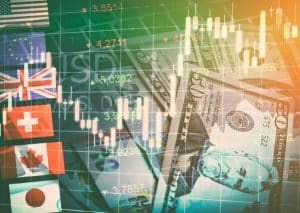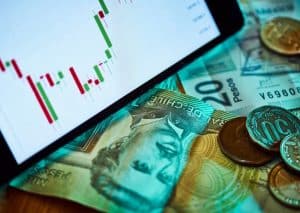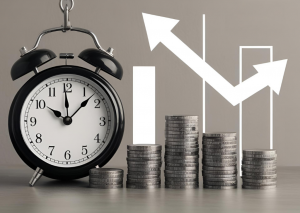The exchange of one currency for another is known as forex trading. Normally, you trade money for an item or service. Trading stocks involves exchanging funds for shares in a company. In the foreign exchange market, we convert one currency unit into another.
The most frequently exchanged currencies are the US dollar (USD), the euro (EUR), and the pound (GBP). Other significant currencies include the Australian dollar (AUD), Canadian dollar (CAD), and Japanese yen (JPY). Forex traders transact through an organized network of dealers and computer systems acting as market makers for their clients. They set up pairings of currencies (or currency pairs) for exchange.

The opportunity for arbitrage arises because these currency combinations are linked to different exchange rates. Currency pairings are the foundation of forex trading, involving the simultaneous buying and selling of different currencies.
Getting Started with Forex Trading
Beginners should invest time in education, focusing on risk management, technical analysis, and fundamental analysis. While technical analysis uses price charts and indicators to predict price movements, fundamental analysis examines economic variables like interest rates, GDP growth, and geopolitical events.
Risk management strategies help reduce potential losses and protect investments. To ensure ethical trading and fund security, it’s important to choose brokers regulated by reputable financial authorities.
Opening and Using a Trading Account
The next step is to open a trading account, which can suit traders of varying capital levels and experience. Beginners are often advised to start with a demo account, allowing them to practice with virtual funds in a risk-free environment.
Having a clear trading strategy is key to staying disciplined and avoiding emotional decisions. Traders should risk only a small percentage of their capital—typically 1% to 2% per trade.
Forex trading also demands constant learning and staying informed about market news and economic developments. Traders must improve their strategies, adapt to market shifts, and learn from both winning and losing trades.
Effective Risk Management Techniques
Risk management is one of the most important elements in forex trading. Use broker-provided tools such as trailing stop orders and guaranteed stop-loss orders to improve risk control.
Setting a stop-loss order is vital—it helps cap potential losses on a trade. Another key component is position sizing. Choose the right lot size based on your account balance and risk tolerance to safeguard capital and minimize losses.

Start small when transitioning from demo to live trading. Also, define how much you’re willing to risk per trade and set stop-loss orders accordingly.
Choosing the Right Forex Broker
Selecting a trustworthy forex broker is essential for a seamless trading experience. Brokers act as intermediaries by offering access to the currency market and providing trading platforms.
When choosing a broker, consider factors such as user-friendly interfaces, available markets, trading fees, regulatory oversight, and customer service quality.
Forex brokers earn from the spread, measured in pips—the difference between the buying and selling price of a currency pair. A high spread indicates a larger difference, while a low spread shows a smaller one.
Since brokers often don’t charge direct fees, spreads become a key consideration. Evaluate elements like tight spreads, strong regulatory oversight, and platform resources, including real-time charts, technical tools, data feeds, and trading support.
Always test platforms through free trials or demos before committing.
The Role of Forex Brokers in Trading
Forex brokers are vital for traders. They provide access to the interbank foreign exchange market, helping traders capitalize on the market’s liquidity and volatility.
Many brokers offer leverage, allowing traders to open larger positions and trade on margin. This boosts potential gains—but also increases risk. Traders can use stop-loss and limit orders to manage risk and protect funds.
Some brokers also offer mobile trading apps, enabling flexibility and constant access to the market.
Broker Services, Education & Customer Support
Many forex brokers provide educational resources, webinars, tutorials, and market analysis that help traders grow their skills. These materials are especially beneficial for new traders who need to understand risk management, market trends, and trading strategies.
Brokers also offer customer support, such as assistance with account setup, trading strategies, and platform usage. Reliable support is especially helpful for beginners.
Another key benefit is regulatory protection. Brokers regulated by financial authorities follow transparent business practices and safeguard client funds, giving traders confidence and peace of mind.
Understanding Leverage and Capital Requirements

Leverage plays a crucial role in forex trading, as profit margins are often based on small price movements. Leverage is expressed as a ratio—total capital available divided by actual invested capital.
A 100:1 ratio means that for every $1 of your money, your broker lends $100. Some brokerages offer up to 250:1. If you have limited funds, consider brokers offering high leverage through margin accounts or access to a broader range of instruments.
In contrast, with volatile or exotic currency pairs, lower leverage might be safer. Choose a broker that offers the right mix of tools, services, and leverage options to suit your trading style and capital.




